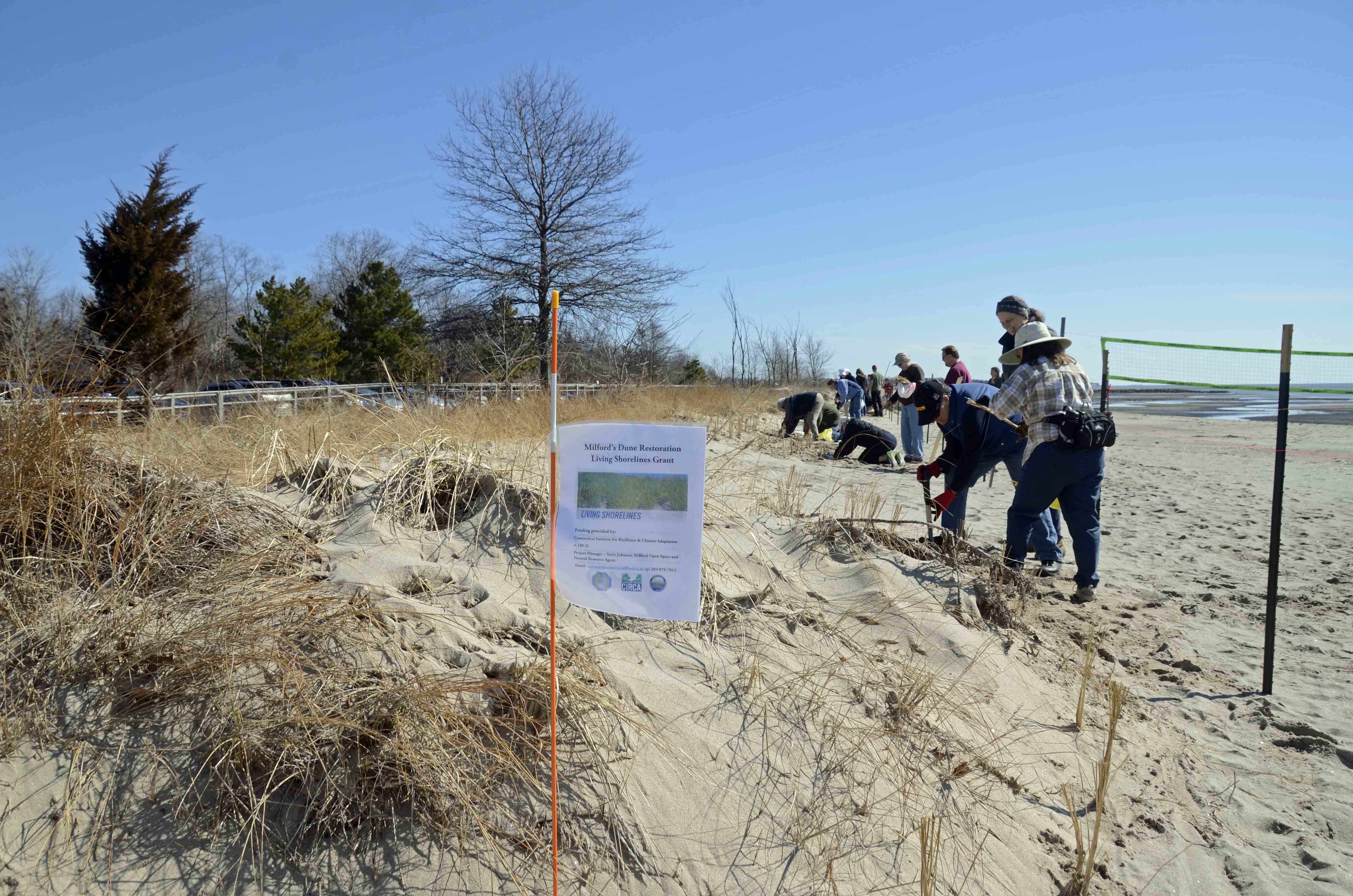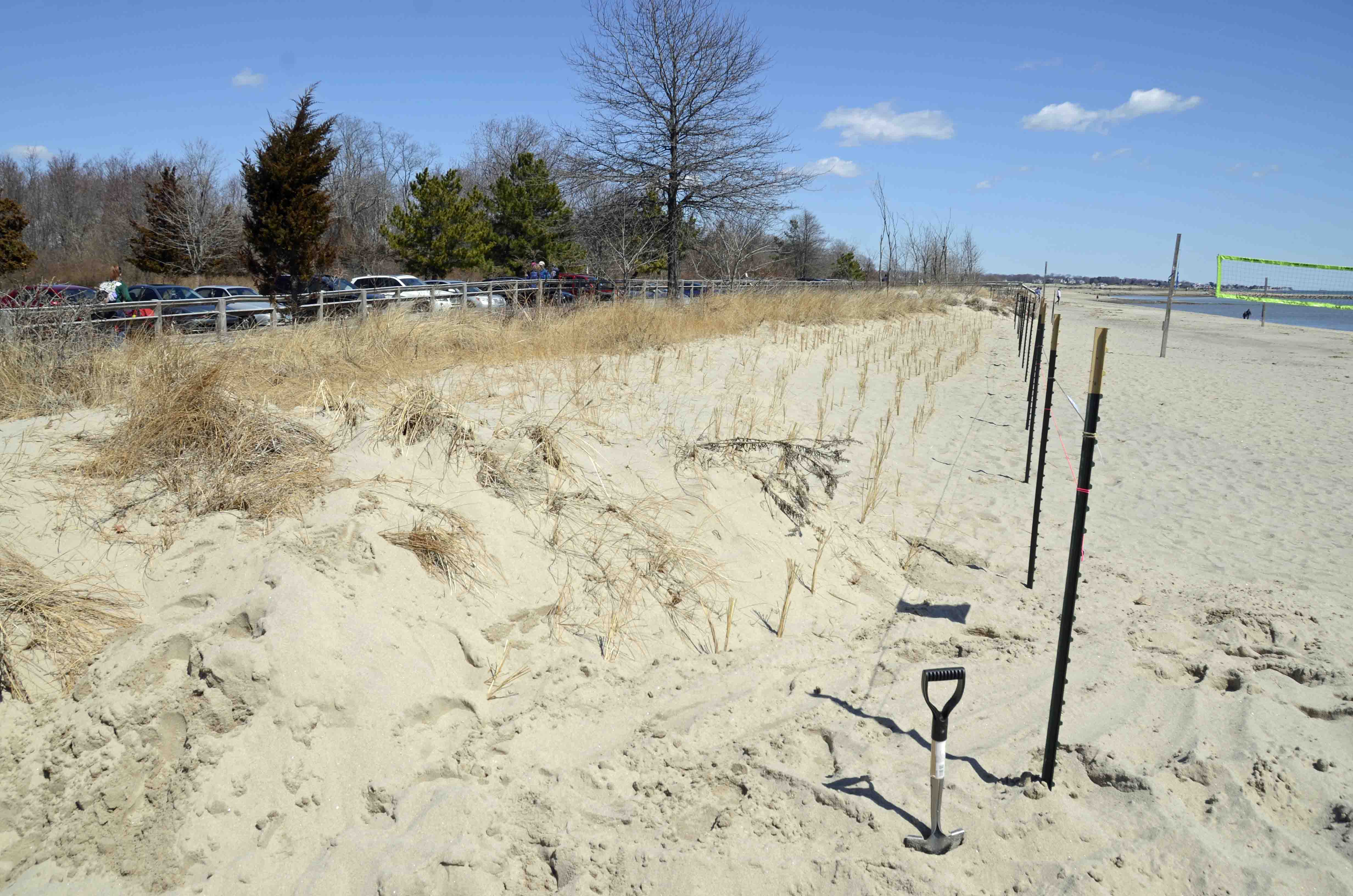Project Summary
With 17.5 miles of coast, the City of Milford has the longest shoreline in Connecticut. This coastline was severely impacted in both storms Irene and Sandy. To address storm impacts, the city submitted a grant proposal to CIRCA for restoring a degraded dune in a high-traffic area and developing a plan for post-restoration dune management. The dune is located in what is known as the Walnut Beach area, which is an 18-acre open space parcel that includes a city beach, dunes, the Albert Munroe Pier, a pavilion, a boardwalk, parking, woods, and meadows adjacent to Silver Sands State Park. The vegetated dune extends about 370 feet along the boardwalk, measuring an estimated total of 14,274 square feet.
Some of the coastal vegetation established in the dune is a mix of native vegetation. Unfortunately, there are several non-native invasive plants threatening the dune’s resiliency, its habitat, and its aesthetic appeal to the public. Japanese Knotweed (Polygonum cuspidatum) is growing in 16% of the dune in three patches on the western edge along the boardwalk. There is also Oriental Bittersweet (Celastrus orbiculatus), Mugwort (Artemisia vugaris), Black Locust (Robinia pseudoacacia), and a suspected honeysuckle shrub. The goal of this living shorelines approach was to restore the natural buffering capacity of the dune to storms like Irene and Sandy, making the City more resilient to future events. The project involves partnerships between the City of Milford, the Walnut Beach Association, two project advisors from CT Sea Grant and CIRCA. This Municipal Resilience Grant award was for the amount of $7,830.
Product
Milford Final Report_November 2018
Project Description
This living shorelines project involved replanting 2,000 ft2 of barren dune with native beach grass, removing invasive plant species that occur on 2,500 ft2 of the dune and replanting this area with native plants as well. In addition to planting Cape American beach grass and various shrubs, guidance was sought on other salt tolerant herbaceous vegetation that can be added over time after the invasive plant control measures are complete. Coastal resources such as the NEMO CT Sea Grant website will be a guide along with continued input from CT Sea Grant staff.
Creating a dune demonstration site in the midst of this highly vulnerable section of coastline serves as a model for dune restoration and management best practices including a baseline vegetation inventory, activities for invasive plant management, and recommended native plantings. This project also features a strong public engagement component with the City providing educational opportunities for citizens and visitors alike to learn about dune restoration and about living shorelines activities more generally. Ultimately, this project’s approach will create a healthy dune that protects the shoreline from further degradation.
Project Team Members
Steve Johnson - City of Milford Open Space and Natural Resource Agent
Janet McAllister - Walnut Beach Association Liaison
Judy Preston - CT Sea Grant, Long Island Sound Outreach Coordinator
Julianna Barrett - CT Sea Grant, Associate Extension Educator



Dune Restoration in Milford All Photos: Steve Johnson
Topic Areas
This project is a part of the following topical areas: